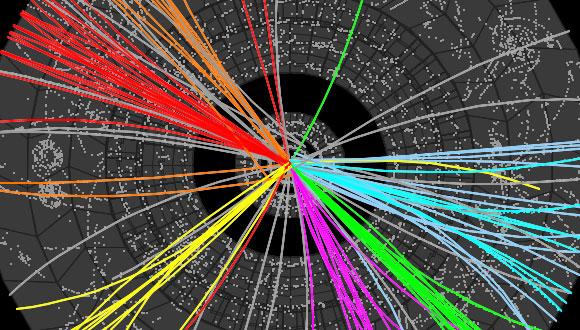Particle Physics Seminar: Topics in the study of hadrons as strings with massive and charged endpoints - The classical string configurations and the computation of the mass difference between charged and neutral hadrons
Guy Matmon, TAU
Zoom: https://tau-ac-il.zoom.us/j/84868644430?pwd=bVg3bGhKWXhtaE1WcitBMCtFWFQ3Zz09
Abstract:
Stringy hadron approaches have proved themselves through the years mainly via their computed spectrum that fits well the PDG results whereas from QCD it is difficult to determine the hadronic spectrum. The HISH (Holography Inspired Stringy Hadrons) model presents a map from stringy hadrons in a holographic 10 dimensional space-time which includes confining background (e.g. Sakai-Sugimoto-Witten model - SSW) to a 4 dimensional (3+1) flat space-time. Inspired by the HISH model, we present a classical analysis for a system of a relativistic Nambu-Gotto string with electrically charged and massive endpoints. The main two goals of this analysis are: first, to explore the classical Regge behavior of a string with massive and charged endpoints, second, to account for the mass differences between pairs of neutral and charged hadrons with the same quantum numbers, yielding a determination of the mass difference between the d and u quarks. Our discussion begins by deriving the system's relativistic equations of motion. Then, in a pre-motivating manner, we present the analysis of the classical case of a N.G. string with massive endpoints (with no electric charge). Following, is the analysis of the charged massive string endpoints case: as a pre-motivation, we show the analysis of a charged relativistic point particle in constant electric and magnetic field. Resuming the stringy analysis, we divide our discussion into two main parts: the first, ignores the interaction between the strings electrically charged endpoints and considers only their interaction with a constant background electric/magnetic field for the cases of zero and nonezero net charge. Next, we treat the dynamical case of the electromagnetic fields: we consider only the electromagnetic interaction between the endpoint charges with no background field. We then proceed to show that radiative effects are negligible in the strong interaction time scale, for a system of a rotating string, justifying our approximated static force equation we used to estimate the mass difference between the d and u quarks as \Delta m_{du} = 1.39 \pm 0.71 [MeV], based on previous HISH results and PDG data.
Seminar Organizers: Dr. Michael Geller & Dr. Adi Ashkanzi


